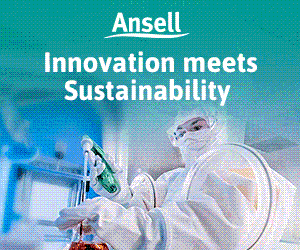Following the release of the revised edition of Annex 1, we’ve seen a big increase in clients wanting to implement an isolator system that utilises a sporicidal agent.
While Annex 1 is an EU regulation, these guidelines have been adopted by the UK’s MHRA
This is to provide an automated biodecontamination process for the interior of the isolator as well as a validated Material Transfer process, eliminating the introduction of contamination. The go-to sporicidal agent in this instance is vaporised hydrogen peroxide (VHP).
While Annex 1 is an EU regulation, these guidelines have been adopted by the UK’s Medicines and Healthcare products Regulatory Agency (MHRA), which is responsible for licences and auditing across the UK’s pharmaceutical and medical devices sectors. This has made Annex 1 the industry standard.
An end to traditional practices
The shift is welcomed as it will reduce the risk of human error during manual cleaning or spray and wipe material transfer processes. Having a validated repeatable, reproducible process providing a 6-log sporicidal kill will improve patient safety.
As traditional open fronted cabinets are phased out, technicians will need to adapt their processes to operate in UDAF (Uni-directional airflow) Grade A Isolators
Open-fronted cabinets and turbulent flow isolators will also begin to be phased out in favour of the UDAF (Uni-directional airflow) Grade A Isolator.
Crucial considerations when investing
The refresh of this equipment will, of course, require careful planning to ensure that an investment in new isolators delivers optimum outcomes. While gassing is not a new concept, and solutions have been around for some time, this area of technology has advanced considerably in recent years.
Cleanroom operators that are looking to invest need to ensure they are fully aware of the new options available and the implications of deploying new isolators. Here are three key things to consider.
1. Decontamination speed: Advancements have helped to accelerate the gassing process. In a hospital setting, where a newly diagnosed cancer patient may require chemotherapy drugs to be produced and delivered within four hours, this can make all the difference.
Many Rapid Gassing Isolator systems are large and require specialist services
As benchmark guidance, cleanroom operators should be looking to install equipment that can complete the validated VHP Gassing Material Transfer process within 30 minutes or less.
2. New ways of working: Practical operational factors also need to be considered. As traditional open fronted cabinets are phased out, for instance, technicians will need to adapt their processes to operate in UDAF (Uni-directional airflow) Grade A Isolators.
As benchmark guidance, cleanroom operators should be looking to install equipment that can complete the validated VHP Gassing Material Transfer process within 30 minutes or less
Special attention must be given to the ergonomics of operating, moving and cleaning compounders. These provide an automated pumping system that compounds multiple sterile ingredients into a finished solution. When transferring from an open-fronted cabinet to an isolator for this application it is advisable to include an ergonomic mock up review at the isolator supplier’s facility. This will help technicians understand the new equipment and how their processes will be impacted.
3. Cleanroom design: It’s not just the design of the isolators that will be important, the design of the cleanroom as a whole also needs to be reviewed.
Many Rapid Gassing Isolator systems are large and require specialist services including compressed air and large extraction systems to help speed up the aeration phase of the VHP cycle, keeping gassing cycle times to a minimum.
It’s not just the design of the isolators that will be important, the design of the cleanroom as a whole also needs to be reviewed
When making the move from older technology to new Rapid Gassing Isolators within an existing facility, it is important to engage with specialist suppliers at the earliest stage possible so they can visit and review the clean room suite and existing facilities. This will ensure no surprises towards the end of the project.
In summary
While the conversion to rapid gassing won’t happen quickly for all, it will happen eventually.
For organisations like the NHS, there are good reasons why this may need to take a little longer. If this is the case, it is well worth cleanroom designers and operators taking the time to think through everything that might need to change in order to deploy the new equipment as effectively and efficiently as possible.
When making the move from older technology to new Rapid Gassing Isolators within an existing facility, it is important to engage with specialist suppliers at the earliest stage possible
This will involve selecting isolators that are not just fast, but designed to support technicians as they adapt to new ways of working. It also includes a careful review of the cleanroom layout, to ensure effective integration of the new equipment.
This will help to create a cleanroom that is not just operating to best practice standards and complying with regulations but is also ensuring the quality of the drugs being produced and the safety of patients using them.




